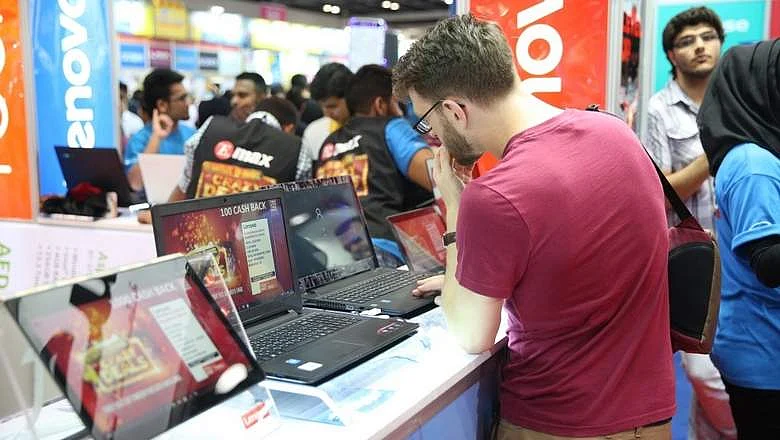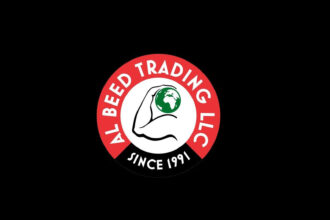Computers on display at a showroom in Dubai.. Photos by File photo
Total sales of consumer tech and durables in the Middle East and Africa (MEA) is expected to rise two per cent this year to $68 billion, a report showed.
According to NielsenIQ, a leading consumer intelligence company, emerging markets such as the Middle East are leading to global growth in global consumer tech and durables sales.
Strong economic sentiment in specific countries within the MEA in 2025 will continue to drive the region’s overall demand for consumer technology.
Saudi Arabia and the UAE are seen as priority markets for premium smartphones, TVs, and laptops. However, demand for lower-priced devices is also increasing, with lower-income consumers buying Chinese brands that offer strong features and functionality at lower price points.
In 2025, brands selling into the Middle East and Africa must navigate fragmented consumer profiles and a crowded retail landscape. Success will depend on clear brand differentiation and tailored product ranges that balance price and functionality across diverse markets. Staying informed on global consumer trends is also essential, as MEA consumers rapidly close the gap in trend adoption.
The revenue share of phones equipped with an AI processor, by region in MEA, is 32 per cent of total sales. In smartphones, foldables are a small segment, but volume demand is growing fast within Egypt and Saudi Arabia.
In the UAE, premium purchases overall are being boosted by higher-income expatriates returning from Russia, together with foreign tourists to UAE buying portable tech to take home with them.
Saudi Arabia’s growth in gaming PCs and accessories will continue, driven by the social adoption of e-sports in the country.
Globally, consumer tech and durables sales are likely to reach $1.29 trillion — driven by emerging markets, replacement cycles, and premium innovation – in the year ahead.
“Manufacturers and retailers should focus on creating solutions that address real-world challenges and elevate the consumer experience. This involves leveraging cutting-edge technologies to offer products that are not only high-quality but also user-friendly and impactful”, says Andrey Dvoychenkov, NielsenIQ General Manager APP. “By doing so, they can build stronger connections with consumers who are increasingly seeking products that align with their values and enhance their daily lives.”
The tech demand is increasing across generations, but it is much more vocal in Gen Z, the report showed. Data shows that 48 per cent of Gen Z regularly use a wearable device that autonomously tracks and learns their behaviour. This number is only 31 per cent for Gen X. In another point, 46 per cent of Gen Z leverages AI in their mobile devices to automate and speed up their everyday decisions whereas it is only 34 per cent for Gen X. “As we see significant adoption of new technologies for younger generation, the demand and early adoption of any new technology or trend will be driven by Gen Z,” the report said.








